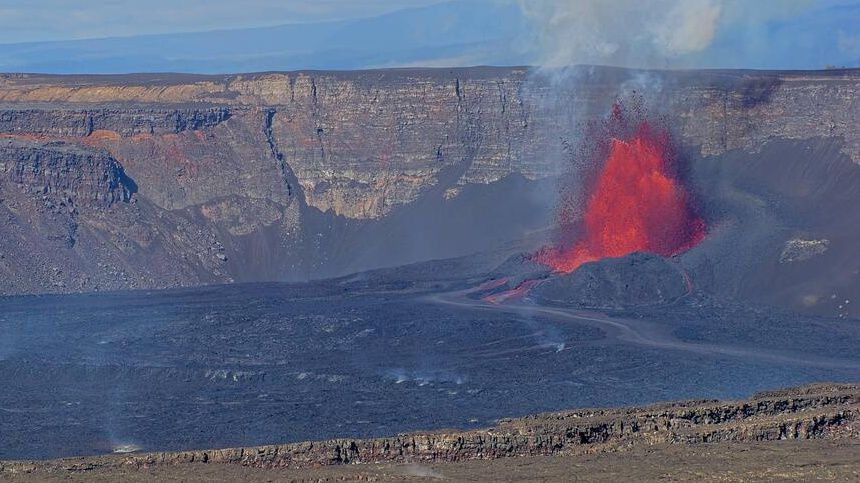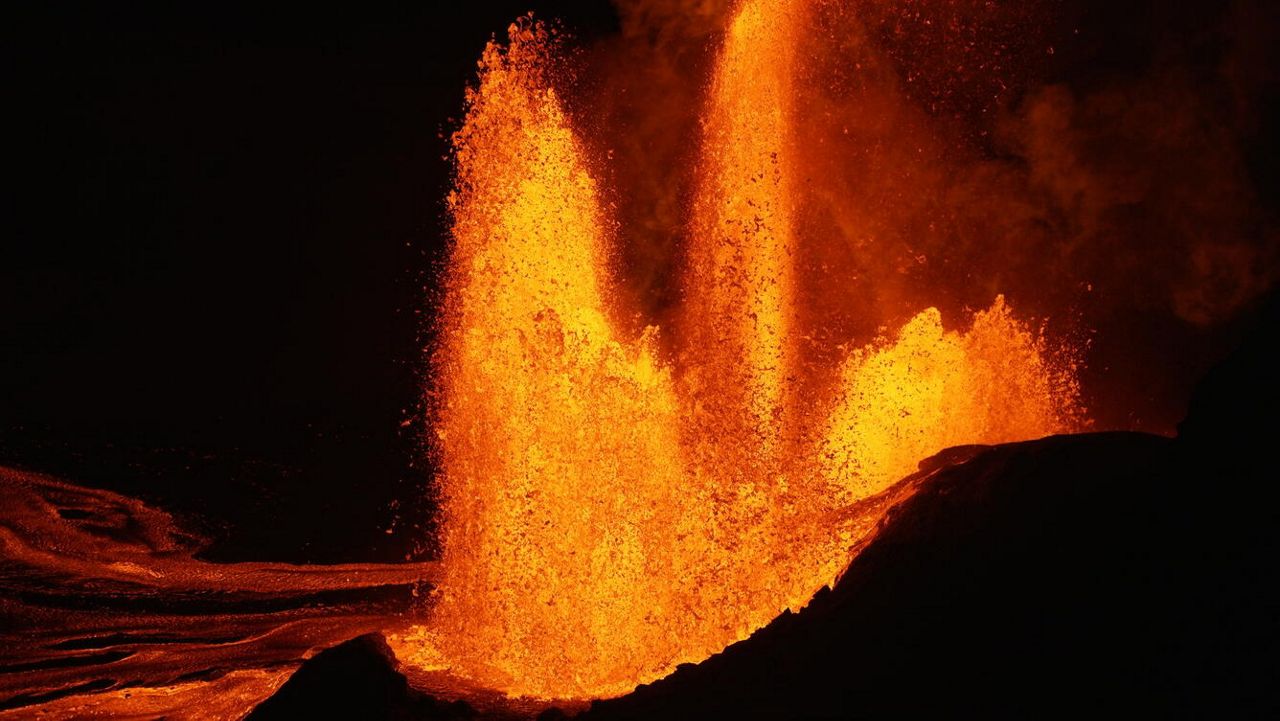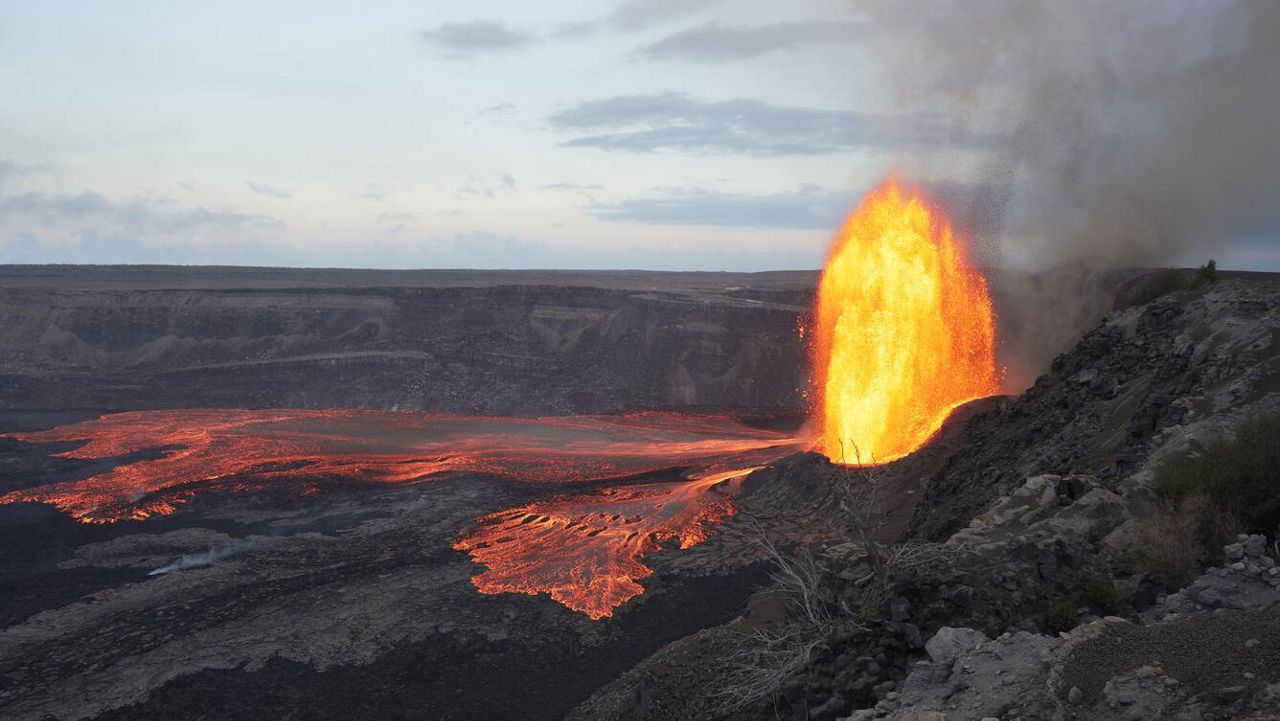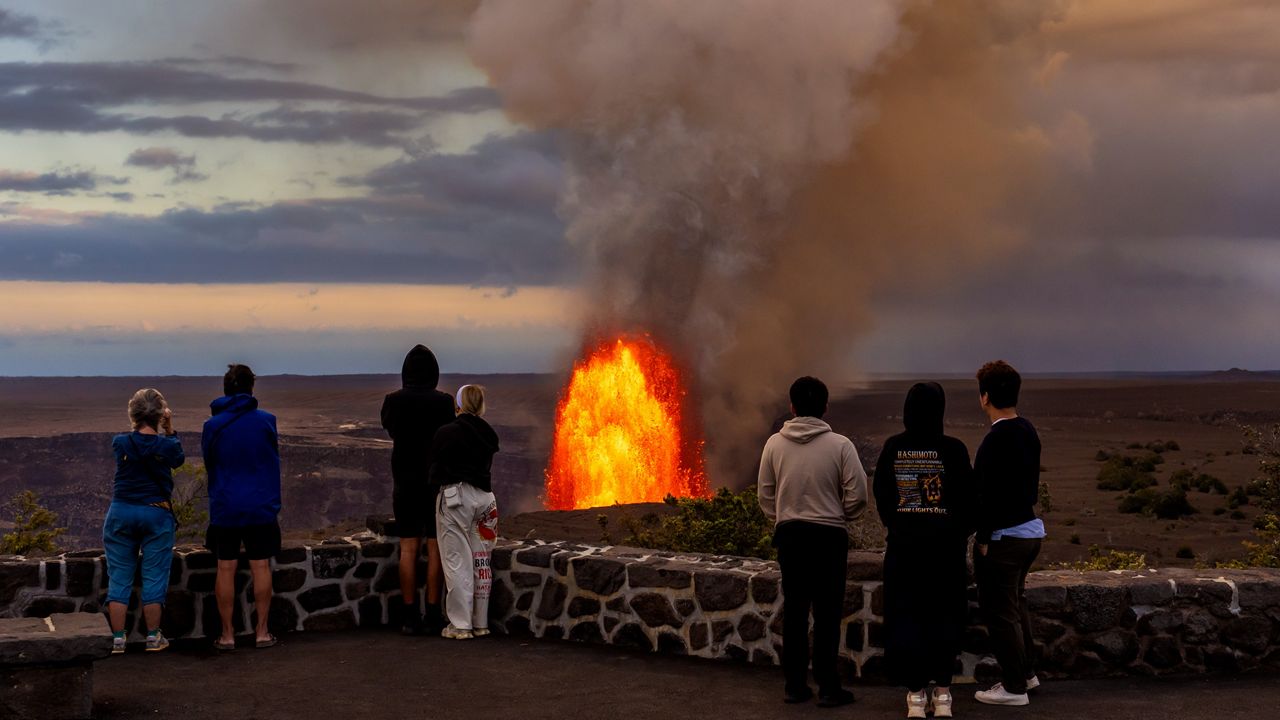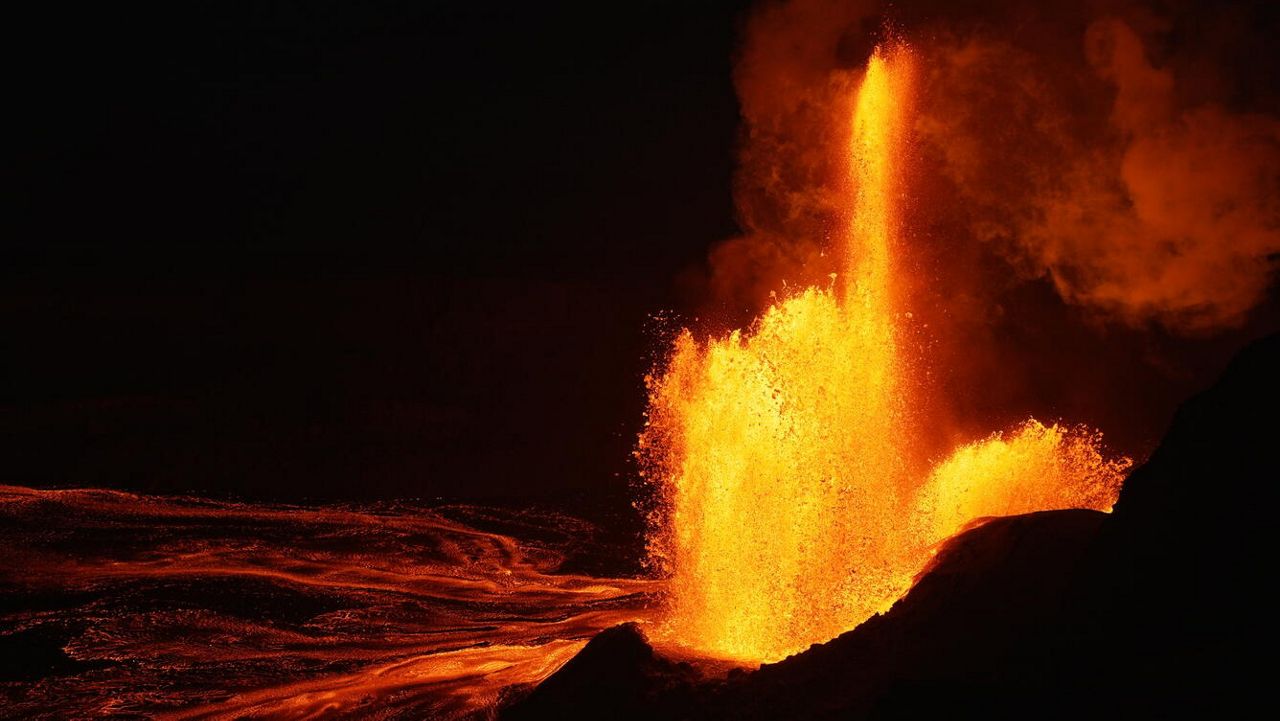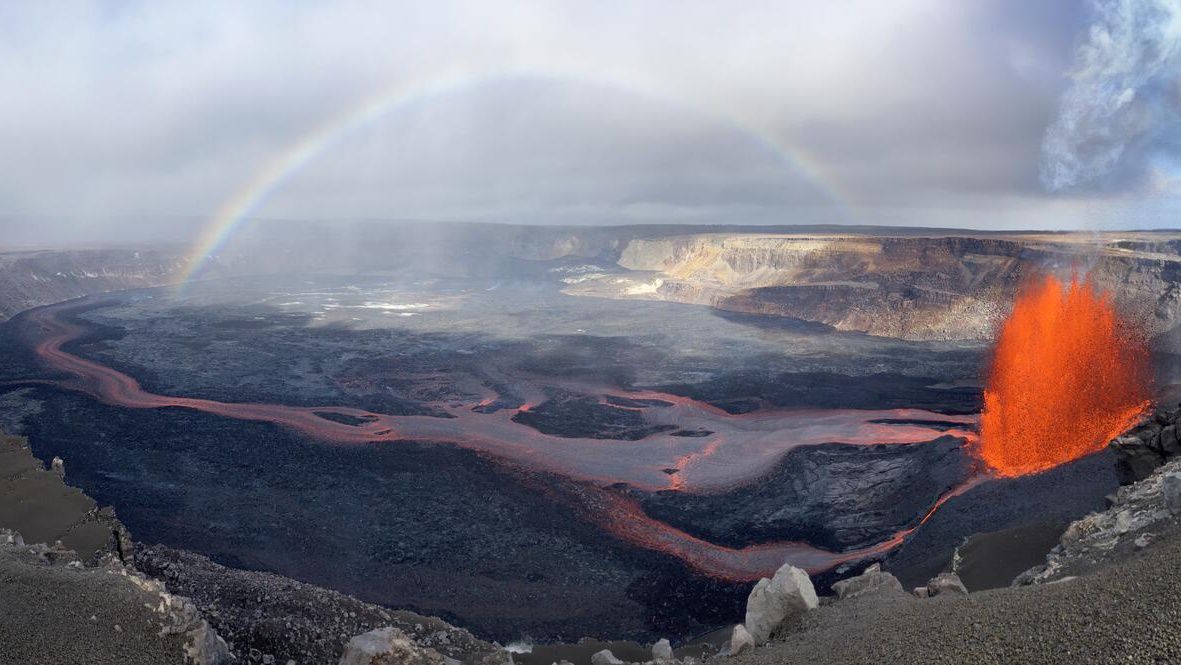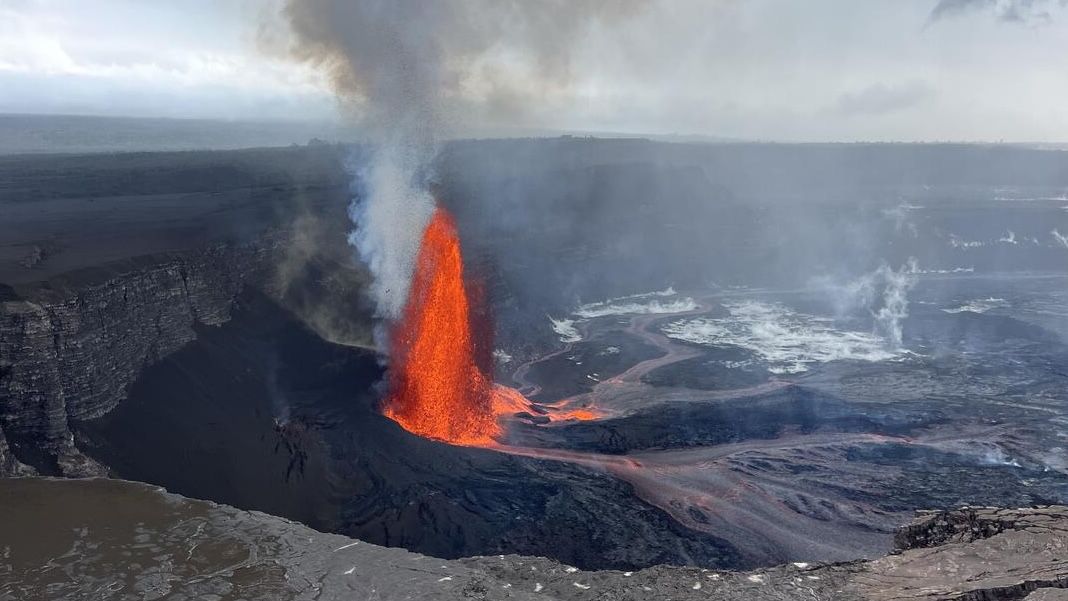The Hawaiian Volcano Observatory reported Kilauea volcano began the main fountaining event of episode 22 on Friday at 5:13 a.m. But the eruption ended abruptly at 3:29 p.m., after 10 hours and 16 minutes of high fountains.
During the episode, fountains from the north vent reached heights up to 1,000 feet.
The current eruption, which began on Dec. 23, 2024, has already produced 21 episodes of lava fountaining, each separated by brief pauses in activity. These spectacular bursts of lava originate from two vents within the Halemaʻumaʻu crater: the north vent and the south vent.
Before the sustained fountain phase of episode 22, the vents went through several small, sporadic gas-piston events that produced spatter fountains and short lava flows, which started Thursday at 10:45 p.m., according to the Hawaiian Volcano Observatory. Five more gas-piston overflows took place in the early morning Friday. At 4:40 a.m., dome fountains overflowed from the vent. By 5:13 a.m. sustained high fountaining began.
The north vent’s fountain heights peaked at 1,000 feet high around 6 a.m. After that, heights began to oscillate around 328-492 feet. By 6:15 a.m., fountains were feeding multiple lava streams, with about 40% of Halemaʻumaʻu crater’s floor covered in lava.
The U.S. Geological Survey-operated agency warned that emissions of volcanic gas — a mix of water vapor, carbon dioxide, and sulfur dioxide — may be elevated. As sulfur dioxide is released from the eruption, it will react in the atmosphere to create the visible haze known as vog.
Also, the Hawaiian Volcano Observatory noted visitors to Hawaii Volcanoes National Park and residents of nearby areas should watch out for Pele’s hair and other small fragments of volcanic glass and tephra carried in the plume, as they were during previous episodes.
Michelle Broder Van Dyke covers the Hawaiian Islands for Spectrum News Hawaii. Email her at michelle.brodervandyke@charter.com.
Editor's note: This story has been updated with information about the end of episode 22. (May 16, 2025)




